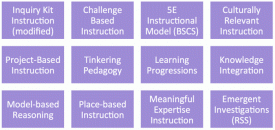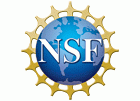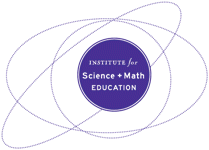Are there multiple instructional models that fit with the science and engineering practices in NGSS? (Short answer: Yes.)

Why It Matters To You
- Teachers should select instructional models for teaching the practices based on their commitments, preferences, and their local context.
- District staff and PD providers should highlight for teachers that multiple instructional models can be used to implement the practices although PD may focus on a specific one.
- School leaders should know what instructional models are used by their teachers and learn to recognize qualities of them within classroom.
What is the Issue?
The Next Gen Science Standards (NGSS) expect learners to engage in eight science and engineering practices in order to learn and apply conceptual ideas. People often assume that a particular instructional model is best for engaging students in the NGSS practices. In fact, there are multiple models that can be used effectively.
Authors:
PHILIP BELL AND ANDREW SHOUSE
Things to Think About
- How satisfied are you with your current way of teaching science and engineering? How well does it engage students in the science and engineering practices?
- What instructional models do you currently use? Which additional ones might be suitable for your context?
- It is productive to take up small specific teaching practices that can be repeated and refined throughout your teaching. What teaching strategy might you want to focus on?
Things to Consider
- NGSS and the underlying NRC Framework do not say anywhere that there is only one instructional approach for engaging students in the practices. But specific curricula, instructional resources, and PD can reinforce this view by focusing on only one model at a time. There are actually multiple instructional models that can be productively used to implement the learning goals of NGSS.
- Explore the practice-focused instructional models listed in the table and select one(s) that fit your situation and personal preferences.
- Selecting an instructional model that fits a particular classroom should be based on local circumstances. This can involve supporting instruction that fits a teacher's personal history, goals, or commitments. Or it can be based on what instructional model is in use in the local curriculum. The district's or school's instructional strategy or a professional learning community may also shape teachers' orientation to an instructional model.
- Implementing an instructional model may require adaptation of available curriculum to engage students in the practices.
- Multiple instructional models can be integrated, but it is important for the learning experience to be coherent so that a rigorous and engaging classroom culture can be cultivated.
Attending to Equity
- Instructional strategies vary in terms of how they relate the science being learned to the lives and interests of the learners and the communities they are part of. Some instructional models—for example, culturally relevant instruction—actively connect to and build upon the life experiences and practices of learners.
- In order to make science teaching and learning as inclusive as possible, educators should select instructional models that engage students with the practices in different, locally relevant ways.
Recommended Actions You Can Take
- Learn which instructional models for science instruction are used in your district, school, or PD. Determine if it focuses on practices.
- Connect to others who use a desired instructional model in order to share materials and learn about the finer points of using a specific instructional model.
ALSO SEE STEM TEACHING TOOLS
STEM Teaching Tools content copyright 2014-22 UW Institute for Science + Math Education. All rights reserved.
This site is primarily funded by the National Science Foundation (NSF) through Award #1920249 (previously through Awards #1238253 and #1854059). Opinions expressed are not those of any funding agency.
Work is licensed under a Creative Commons Attribution-ShareAlike 4.0 Unported License. Others may adapt with attribution. Funded by the National Science Foundation (NSF). Opinions expressed are not those of any funding agency.


 Email Feedback
Email Feedback



